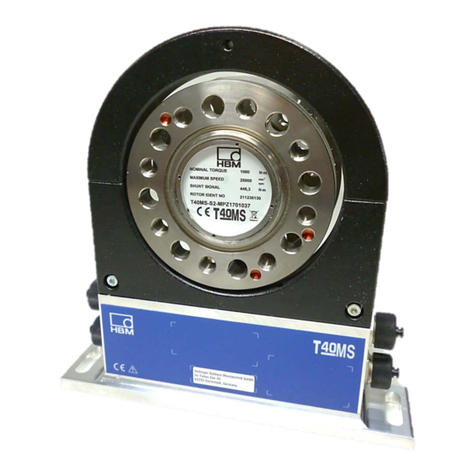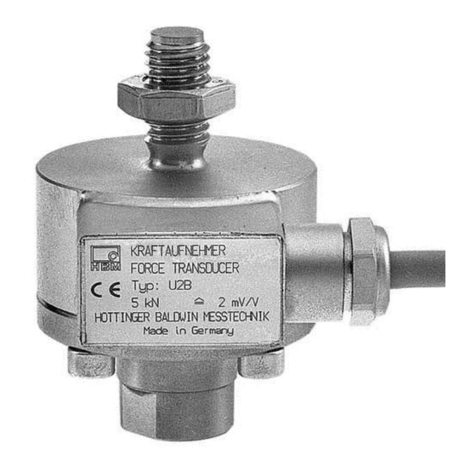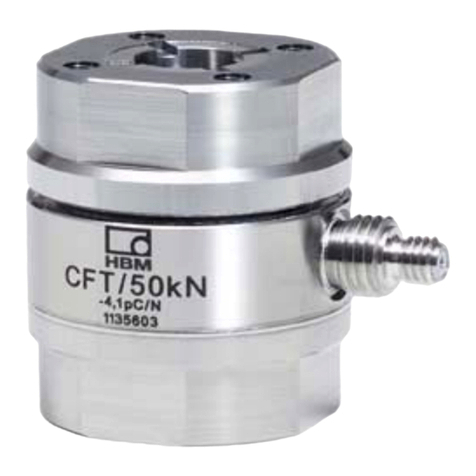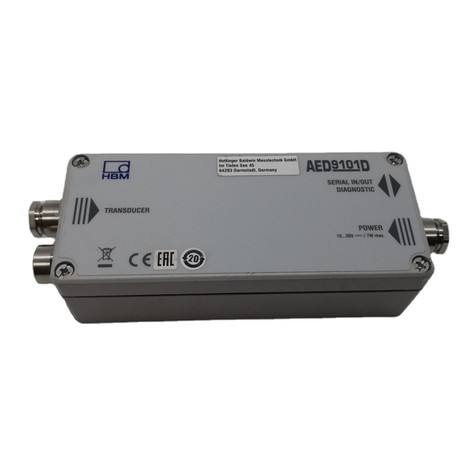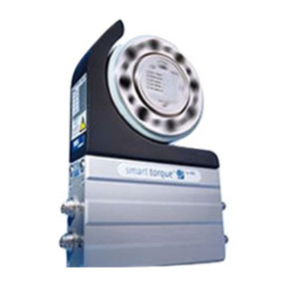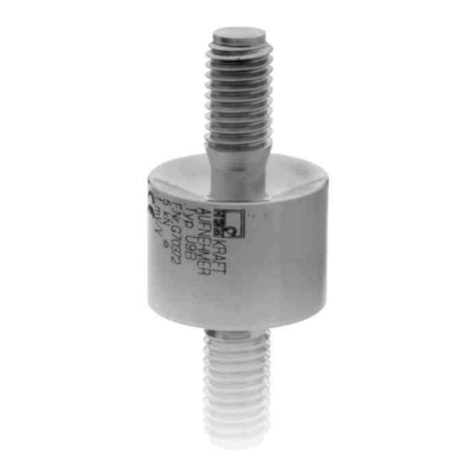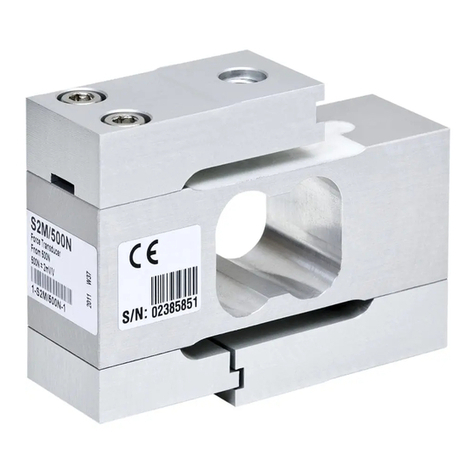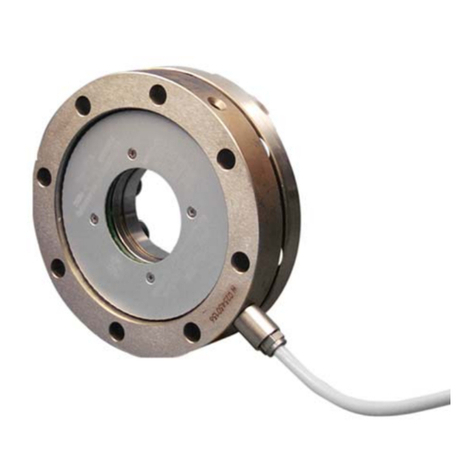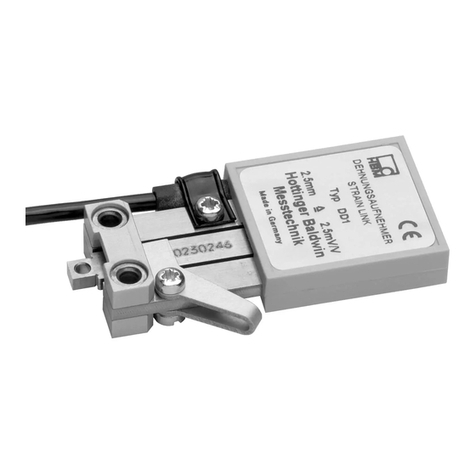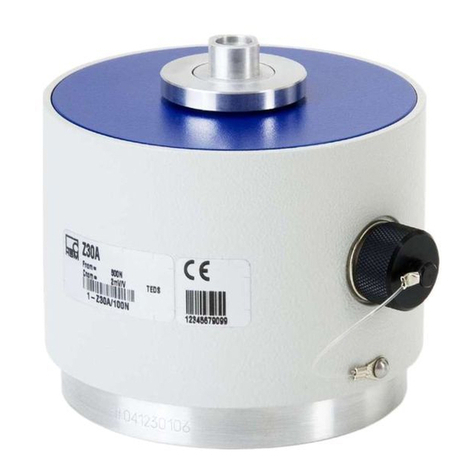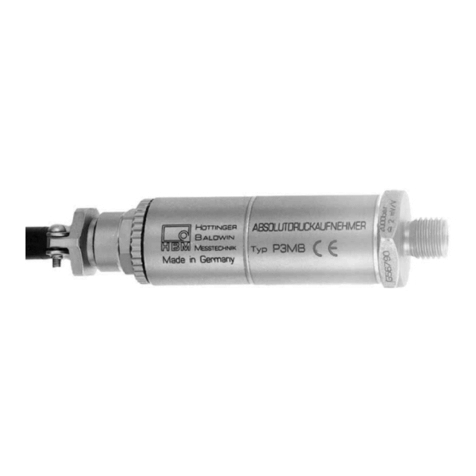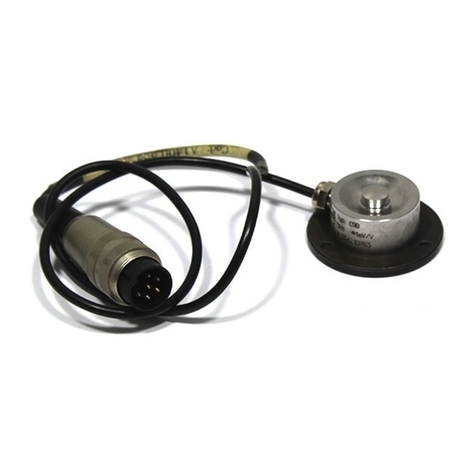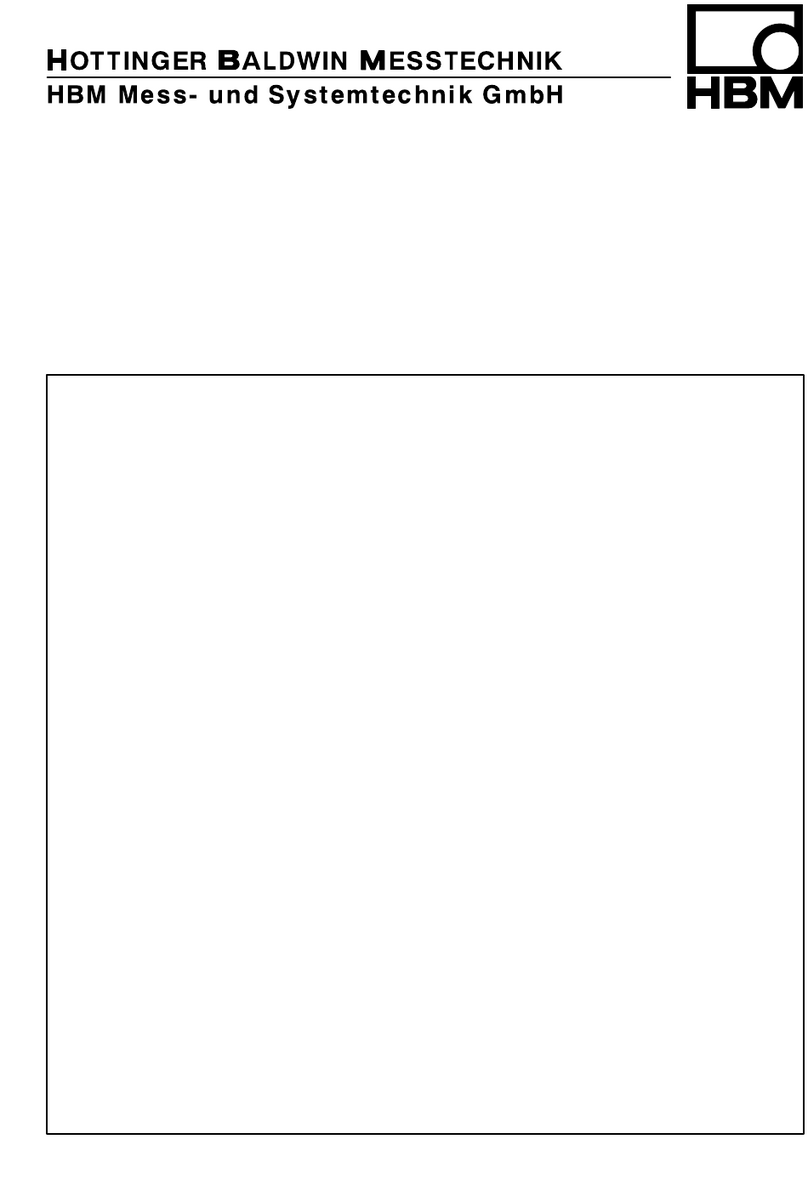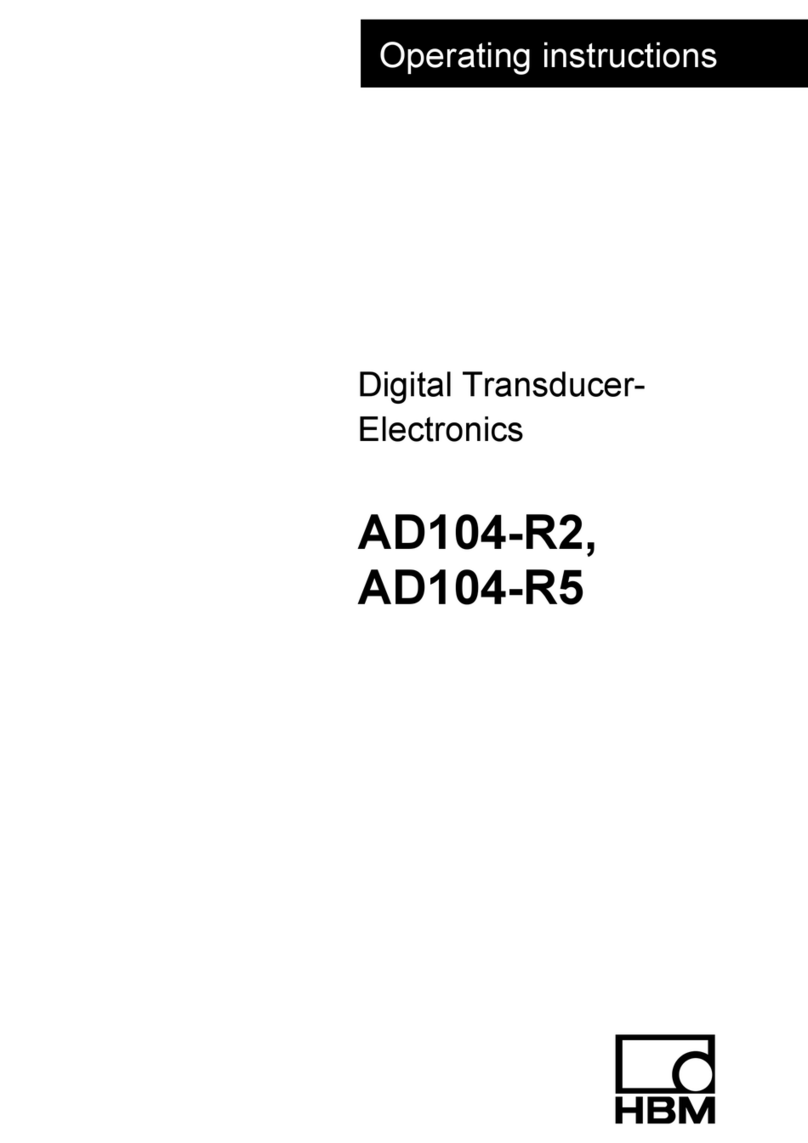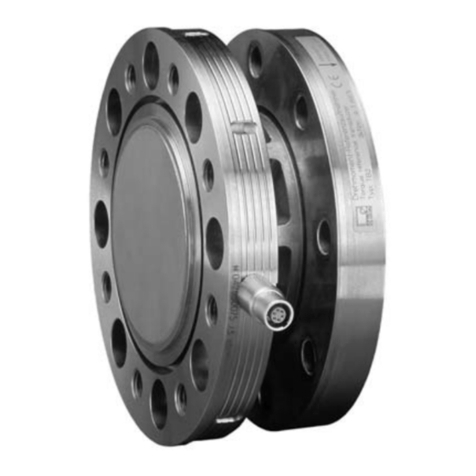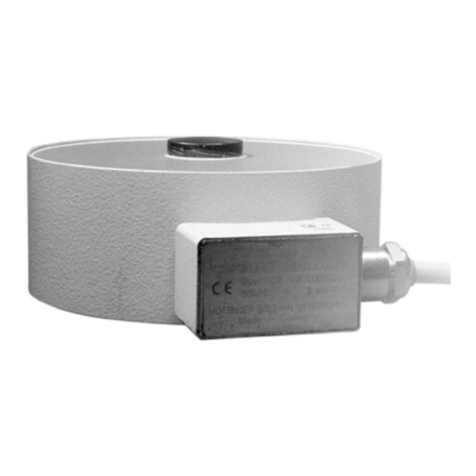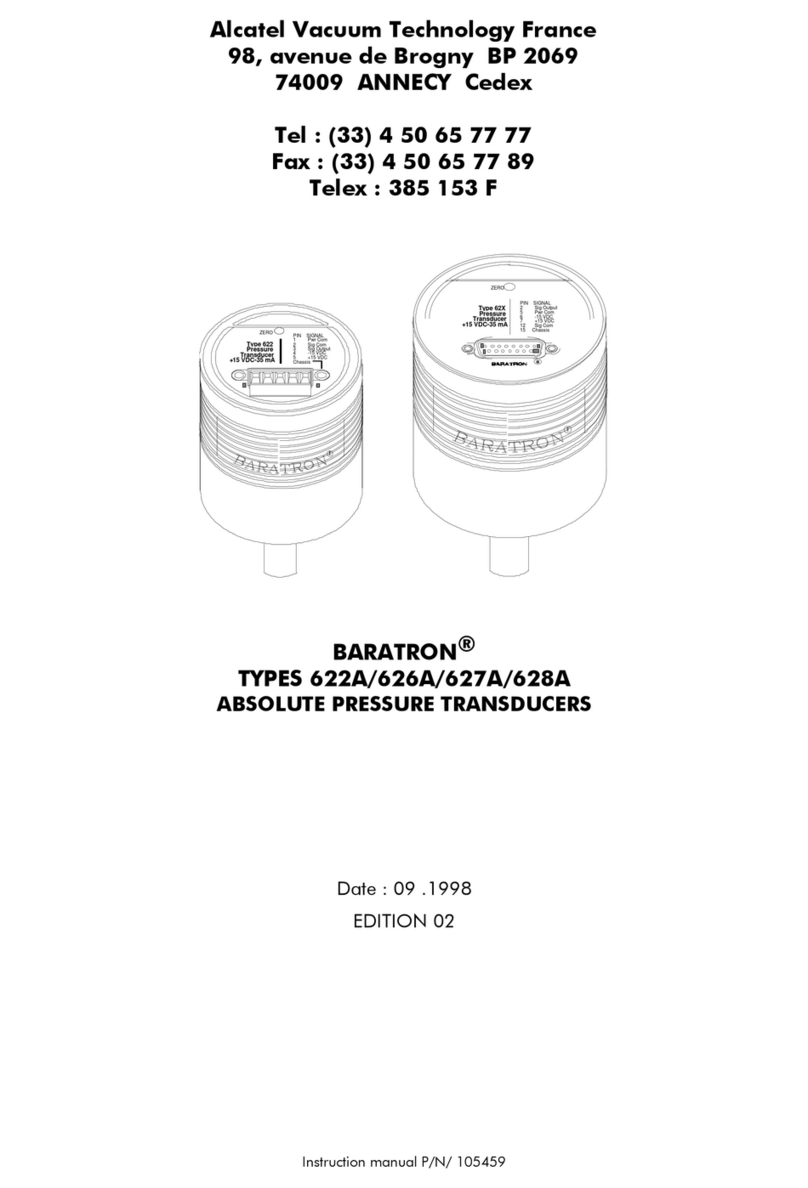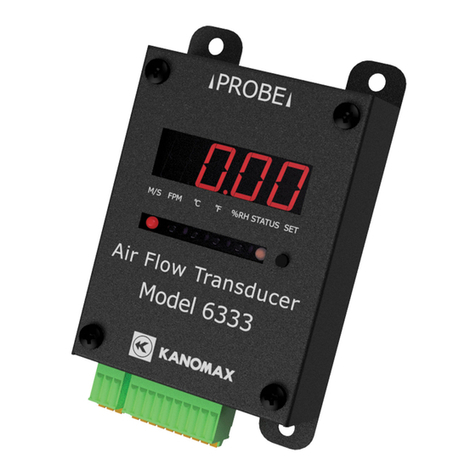
8TB1A
HBM A01627.0en/de/fr
1 Scope of supply
The scope of supply includes the following:
1Reference torque measuringdisc
1 Mounting Instructions
1 Test record
2Application
Transducers measure static and dynamic torques in nonturning mode. The
nominal torques fall within the range 100 N⋅m to 10kN⋅m.
Transfertorque transducer
The main applications are torque transfer, for example, when calibrating
reference transducers in test and calibration machines and comparisons of
the reference normals of various calibration laboratories.
In the case of transfer transducers, a high degree of comparability is import
ant, as when relaying torque, this provides a gage for various observers, test
conditions, laboratories and the installation and time situation. So for relay, the
same installation conditions should be created as for calibration in the refe
rence normal, or relevant adapters (for recommendations, see Page 17f)
should be included in the calibration.
Reference torque transducer
Reference torque transducers are mounted in a calibration device and then
the entire calibration machine is qualified or certified by means of transfer
torque transducers, for example. The precise sensitivity of the transducer is
thus less important.
General torque measurements in nonturning mode
Because of the high mechanical loading capacity, the permissible vibration
bandwidth of 160% (10kN⋅m=120%) of nominal torque and the compact
design, the transducers are also eminently suitable for use in testing
machines for component testing (rotary alternating stress) or as reaction
torque transducers, for example in agitators with direct drive motor or gearbox
connection.






